
Belgrade: The White City of Rich History and Vibrant Life
Discover Belgrade: A dynamic blend of history, culture, and vibrant urban life at the crossroads of Eastern and Western Europe.
Belgrade, the capital of Serbia, is a city where history meets modernity. Nestled at the confluence of the Sava and Danube rivers, Belgrade boasts an impressive architectural tapestry, from ancient fortresses to contemporary urban spaces. Its strategic location has made it a significant crossroads of Eastern and Western cultures throughout the centuries. Stroll through the historic Belgrade Fortress, perched above the rivers, and immerse yourself in centuries of military history. Nearby, the expansive Kalemegdan Park provides a serene escape with panoramic views of the city. The lively Knez Mihailova Street is a pedestrian paradise, lined with shops, cafes, and historic buildings, leading you straight into the heart of Belgrade's vibrant life. Belgrade is also a city that never sleeps. The Skadarlija district, often compared to Montmartre in Paris, is a bohemian quarter buzzing with traditional taverns, live music, and artistic energy. For a more modern experience, visit the Savamala district, a hub for contemporary art, culture, and nightlife. No visit to Belgrade would be complete without sampling its rich culinary traditions, from hearty Serbian dishes to exquisite pastries. The city's diverse museums, theaters, and galleries ensure that there's something for every cultural taste. Whether you're exploring the historical layers of Belgrade, enjoying its modern-day vibrancy, or soaking in its cultural offerings, this city promises a memorable experience for every traveler.
Local tips in Belgrade
- Visit the Belgrade Fortress early in the morning to avoid crowds and enjoy the best views.
- Use public transport or ride-sharing apps to navigate the city easily and affordably.
- Experience the nightlife on the floating river clubs, known as 'splavovi,' for a unique party atmosphere.
- Don't miss trying local dishes like Ćevapi, Pljeskavica, and Burek at traditional eateries.
- Take a walk along the Sava Promenade for a mix of leisure and scenic views.
- Carry some cash, as not all places accept credit cards, especially in smaller establishments.
Neighbourhoods in Belgrade
Belgrade: The White City of Rich History and Vibrant Life
Belgrade, the capital of Serbia, is a city where history meets modernity. Nestled at the confluence of the Sava and Danube rivers, Belgrade boasts an impressive architectural tapestry, from ancient fortresses to contemporary urban spaces. Its strategic location has made it a significant crossroads of Eastern and Western cultures throughout the centuries. Stroll through the historic Belgrade Fortress, perched above the rivers, and immerse yourself in centuries of military history. Nearby, the expansive Kalemegdan Park provides a serene escape with panoramic views of the city. The lively Knez Mihailova Street is a pedestrian paradise, lined with shops, cafes, and historic buildings, leading you straight into the heart of Belgrade's vibrant life. Belgrade is also a city that never sleeps. The Skadarlija district, often compared to Montmartre in Paris, is a bohemian quarter buzzing with traditional taverns, live music, and artistic energy. For a more modern experience, visit the Savamala district, a hub for contemporary art, culture, and nightlife. No visit to Belgrade would be complete without sampling its rich culinary traditions, from hearty Serbian dishes to exquisite pastries. The city's diverse museums, theaters, and galleries ensure that there's something for every cultural taste. Whether you're exploring the historical layers of Belgrade, enjoying its modern-day vibrancy, or soaking in its cultural offerings, this city promises a memorable experience for every traveler.
When is the best time to go to Belgrade?
Iconic landmarks you can’t miss
Belgrade Fortress
Explore the historic Belgrade Fortress, a stunning blend of nature and rich Serbian heritage with breathtaking views of the Sava and Danube rivers.

Republic Square
Explore the heart of Belgrade at Republic Square, a historical landmark rich in culture and vibrant social life.

Kalemegdan
Experience the rich history and scenic beauty of Kalemegdan, Belgrade's iconic fortress and park, where culture meets nature.

Tasmajdan | Sportsko rekreativni centar | Park
Discover the lush tranquility of Tasmajdan Park in Belgrade, where recreation meets natural beauty for an unforgettable experience.

Nikola Tesla Museum
Explore the Nikola Tesla Museum in Belgrade: A tribute to the genius of innovation and the father of modern electricity.

National Museum of Serbia
Explore the National Museum of Serbia for a captivating journey through the country's history, art, and culture in the heart of Belgrade.

Monument to the Unknown Hero
Discover the Monument to the Unknown Hero on Avala Mountain, a stunning tribute to history surrounded by breathtaking natural beauty.

Monument to Stefan Nemanja
Discover the grandeur of the Monument to Stefan Nemanja, a symbol of Serbian unity and cultural pride in the heart of Belgrade.

The Victor
Discover the majestic Victor monument in Belgrade, standing tall as a symbol of victory and offering breathtaking views of the Sava and Danube rivers.
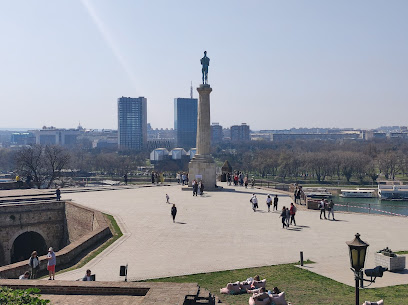
Prince Mihailo Monument
Explore the rich heritage of Belgrade at the stunning Prince Mihailo Monument, a historical landmark in Republic Square surrounded by vibrant city life.

Historical Museum of Serbia
Discover Serbia's rich history at the Historical Museum of Serbia in Belgrade, where artifacts tell the story of a nation through time.

Konak kneginje Ljubice
Explore the rich history and exquisite beauty of Konak kneginje Ljubice, a stunning museum in the heart of Belgrade, Serbia.

The White Palace
Discover the grandeur of The White Palace in Belgrade, a stunning museum showcasing Serbia's royal heritage amidst beautiful gardens.

House of the National Assembly of the Republic of Serbia
Discover the House of the National Assembly in Belgrade, an architectural masterpiece symbolizing Serbian history and democracy.

Statue of Nikola Pašić
Discover the Statue of Nikola Pašić in Belgrade, a historical landmark celebrating Serbia’s rich political heritage amidst a vibrant urban atmosphere.

Unmissable attractions to see
The Temple of Saint Sava
Explore the grandeur of the Temple of Saint Sava in Belgrade, a stunning Orthodox church showcasing extraordinary mosaics and rich cultural heritage.

Kalemegdan
Explore the historic Kalemegdan Fortress in Belgrade, a captivating blend of culture, history, and breathtaking views at the confluence of two rivers.

Belgrade Zoo
Discover diverse wildlife and family-friendly fun at Belgrade Zoo, a serene oasis in the heart of Serbia's capital city, offering unforgettable moments.

Tasmajdan | Sportsko rekreativni centar | Park
Explore Tasmajdan Park in Belgrade, a vibrant urban oasis offering outdoor recreation, cultural experiences, and beautiful green spaces.

Rajko Mitic Stadium
Discover the electric atmosphere of Rajko Mitic Stadium, home to Red Star Belgrade, and immerse yourself in the passion of Serbian football culture.

Belgrade Arena
Discover the excitement of Belgrade Arena, a leading sports complex in Serbia, renowned for thrilling events and vibrant cultural experiences.
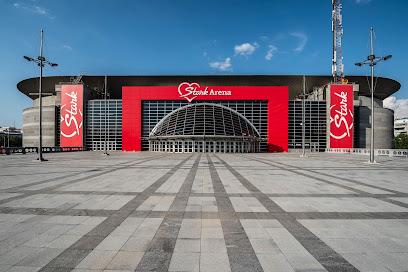
Nikola Tesla Museum
Discover the genius of Nikola Tesla at the museum dedicated to his life and inventions in the heart of Belgrade, a hub of innovation and history.

Sava Center
Discover the Sava Center, a cultural and business hub in Belgrade, showcasing events, architecture, and vibrant city life along the Sava River.

St. Mark Orthodox Church
Discover the architectural beauty and spiritual significance of St. Mark Orthodox Church, a cultural gem in the heart of Belgrade, Serbia.

Topčider park
Discover the serene beauty and historical charm of Topčider Park in Belgrade, a perfect destination for relaxation and exploration amidst nature.

Smederevo Fortress
Discover Smederevo Fortress, a stunning medieval landmark in Serbia that offers breathtaking views and a rich historical experience along the Danube River.

National Museum of Serbia
Discover the National Museum of Serbia, a cultural gem in Belgrade showcasing a vast collection of art and historical artifacts from Serbia and beyond.

Museum of Illusions
Discover the Museum of Illusions in Belgrade, a unique tourist attraction that blends art, science, and interactive fun for all ages.

Partizan Stadium
Explore Partizan Stadium in Belgrade, where football passion meets rich history and electrifying atmosphere, a must-visit for sports lovers.

Farmer's market Zeleni venac
Discover the authentic flavors of Serbia at Farmer's Market Zeleni Venac in Belgrade, where local produce and culinary delights await.
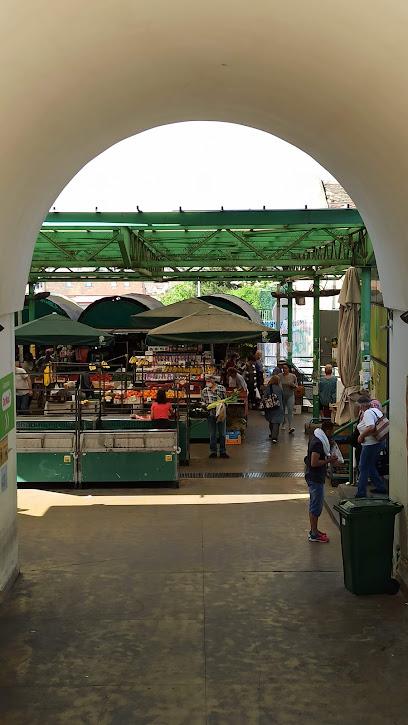
Essential places to dine
Tri šešira
Discover authentic Serbian cuisine at Tri šešira, where tradition meets taste in Belgrade's cultural heart.

Manufaktura Restaurant Belgrade
Experience authentic Serbian cuisine at Manufaktura Restaurant in Belgrade – where tradition meets flavor in every dish.
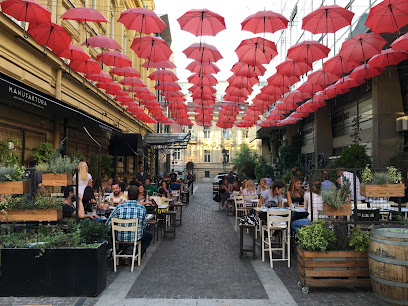
Lorenzo & Kakalamba
Experience the vibrant fusion of Serbian flavors and artistic ambiance at Lorenzo & Kakalamba in Belgrade.

Mama Restaurant Belgrade
Discover Mama Restaurant in Belgrade - where culinary excellence meets vibrant atmosphere for an unforgettable dining experience.
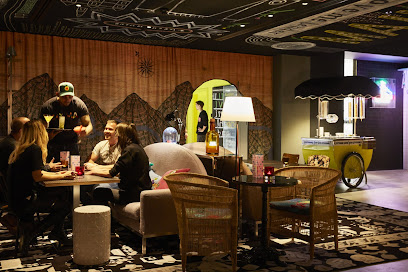
Zavičaj
Experience authentic Serbian cuisine at Zavičaj, where tradition meets flavor in the heart of Belgrade.

Savanova
Discover Savanova in Belgrade: A delightful bistro offering local and international cuisine amidst warm Serbian hospitality.

Mezestoran Dvoriste
Experience authentic Mediterranean flavors at Mezestoran Dvoriste in Belgrade - a culinary gem offering delightful dishes and warm hospitality.
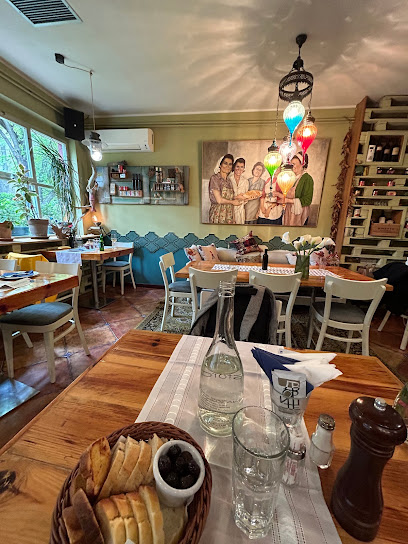
Ambar
Discover the vibrant flavors of the Balkans at Ambar in Belgrade – where tradition meets modern cuisine for an unforgettable dining experience.

Little Bay
Experience the fusion of fine dining and theatrical ambiance at Little Bay in Belgrade – where every meal is a masterpiece.

Comunale Caffe e Cucina
Discover exquisite dining at Comunale Caffe e Cucina in Belgrade's Beton Hala—where local flavors meet international cuisine.
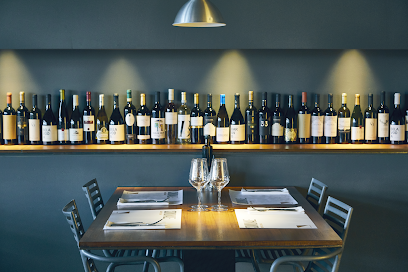
Bistro Grad Hometown Food
Experience authentic Serbian cuisine at Bistro Grad in Belgrade - where tradition meets flavor in every dish.
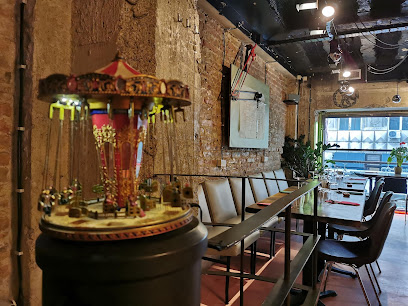
Trattoria Pepe
Experience authentic Italian cuisine at Trattoria Pepe in Belgrade – where every dish tells a story of tradition and flavor.
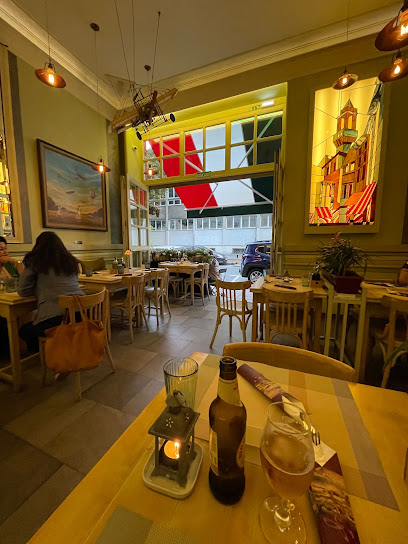
Sky Lounge
Discover the luxurious Sky Lounge in Belgrade - where stunning views meet exquisite dining and cocktail experiences.

Radost Fina Kuhinjica
Experience exceptional vegetarian dining at Radost Fina Kuhinjica in Belgrade, where fresh ingredients meet innovative flavors.

Josephine Belgrade
Experience culinary excellence and innovative cocktails at Josephine Belgrade - where flavor meets sophistication in every bite.

Markets, malls and hidden boutiques
UŠĆE Shopping Center
Explore UŠĆE Shopping Center in Belgrade for a delightful shopping experience with diverse stores, dining options, and entertainment.

BIG FASHION Beograd
Discover BIG FASHION Beograd, the ultimate shopping mall experience in Belgrade, filled with diverse stores, delightful dining, and exciting entertainment.

Rajićeva Shopping Center
Discover the vibrant Rajićeva Shopping Center in Belgrade, where shopping, dining, and local culture come together in a unique experience.

*Zla Shtek* CBD & headshop & Streetwear
Explore Zla Shtek in Belgrade: A unique blend of CBD culture, trendy streetwear, and vibrant local lifestyle, perfect for every traveler.

Felix Shop
Explore the eclectic Felix Shop in Belgrade for unique clothing and rock memorabilia that captures the city's vibrant culture and music scene.

RK Beograd
Experience the vibrant shopping culture of Belgrade at RK Beograd, where diverse shops and delectable dining await.
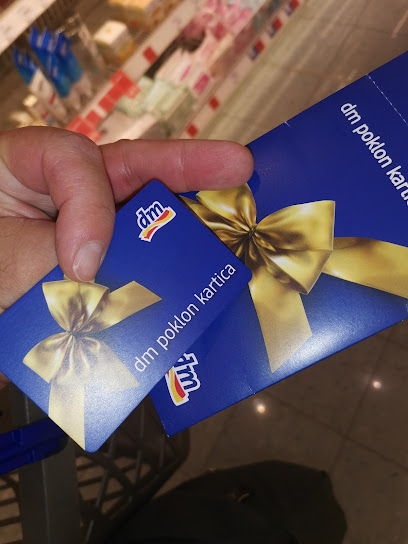
Vintage Beograd
Explore the nostalgic charm of Vintage Beograd, a vintage haven in Belgrade filled with unique treasures and timeless collectibles.

Casual Shop - Кежуал бутик
Explore Casual Shop in Belgrade for trendy casual wear that combines comfort and style, perfect for every fashion enthusiast visiting the city.

Jane Doe Vintage Shop
Explore Jane Doe Vintage Shop in Belgrade for unique vintage clothing and artistic treasures that celebrate the city's vibrant culture and history.

Šmizla Vintage & Design Store
Explore Šmizla Vintage & Design Store in Belgrade for a unique selection of handpicked vintage clothing and accessories that reflect the city's vibrant culture.

Makadam Concept Store
Explore Belgrade's Makadam Concept Store for unique gifts, fashion accessories, and a cozy café experience amidst the city's vibrant culture.

Gadget 4 Gift Novi Beograd
Explore Gadget 4 Gift in Novi Beograd for unique souvenirs and innovative gadgets that celebrate Serbian culture.

Rakia & co
Explore the essence of Serbian culture at Rakia & Co, the perfect gift shop for unique souvenirs and local delicacies in Belgrade.

Hibi BG Shop
Discover the essence of Serbia with unique souvenirs and handcrafted treasures at Hibi BG Shop in Belgrade.

Kilo Shop 2
Explore Kilo Shop 2 in Belgrade, where vintage fashion meets sustainability and every find is a unique treasure waiting to be discovered.
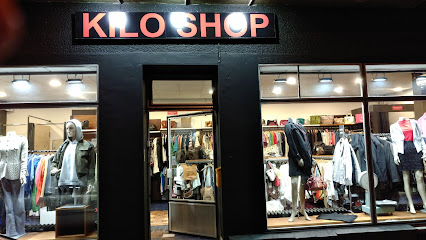
Essential bars & hidden hideouts
Funk & Soul Pub
Discover the vibrant nightlife at Funk & Soul Pub, where delicious drinks and eclectic music create the perfect ambiance in Belgrade.

Gunners Pub
Discover Gunners Pub in Belgrade, a haven for beer lovers with a delightful beer garden and an extensive selection of local brews.

The Three Carrots IRISH PUB
Discover the heart of Ireland in Belgrade at The Three Carrots Irish Pub, where warmth, great food, and unique brews await every visitor.

Passengers Bar
Explore the vibrant flavors of Belgrade at Passengers Bar, where great food, drinks, and atmosphere come together for an unforgettable experience.

Monk's Bar
Experience the vibrant ambiance and extensive drink selection at Monk's Bar, a must-visit nightlife destination in Belgrade's Vračar district.

Monkey Bar Belgrade
Discover the vibrant atmosphere and exquisite cocktails at Monkey Bar Belgrade, a must-visit spot for nightlife enthusiasts in the city.

Bar Central
Discover Bar Central, Belgrade's premier cocktail bar, where innovative drinks and a lively atmosphere create unforgettable nights.

Ginger Bar
Experience the lively atmosphere and exquisite drinks at Ginger Bar in Belgrade's historic Stari Grad district.

Rob Roy 1884
Discover the lively atmosphere of Rob Roy 1884, a must-visit pub in Belgrade offering delicious drinks and a taste of local culture.

Kultura Bar
Experience the vibrant nightlife at Kultura Bar, a top cocktail destination in Belgrade offering innovative drinks and a lively atmosphere.
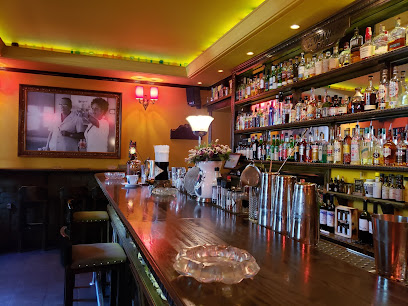
Riddle Bar
Discover Riddle Bar in Belgrade, where innovative cocktails and vibrant atmosphere create an unforgettable nightlife experience.

Boho Bar
Experience the vibrant nightlife of Belgrade at Boho Bar, where exquisite cocktails meet stunning river views in a chic atmosphere.

Josephine Belgrade
Discover the culinary artistry and innovative cocktails at Josephine Belgrade, a premier dining destination in the heart of Serbia.

Bitters Bar
Discover Belgrade's vibrant nightlife at Bitters Bar, where expert mixology meets an inviting atmosphere in the heart of the city.

Belgrade Cocktail Club
Experience the art of mixology at Belgrade Cocktail Club, where every cocktail is a masterpiece waiting to be savored.

Local Phrases
-
- HelloZdravo
[Zdrah-vo] - GoodbyeDoviđenja
[Doh-vee-je-nya] - YesDa
[Da] - NoNe
[Ne] - Please/You're welcomeMolim te
[Moh-leem teh] - Thank youHvala
[Hva-la] - Excuse me/SorryIzvinite
[Eez-vee-nee-teh] - How are you?Kako si?
[Ka-ko see] - Fine. And you?Dobro. A ti?
[Doh-bro. Ah tee] - Do you speak English?Da li govorite engleski?
[Da lee go-vo-ree-teh eng-lehs-kee] - I don't understandNe razumem
[Ne rah-zoo-mem]
- HelloZdravo
-
- I'd like to see the menu, pleaseMolim vas, želeo bih videti meni
[Moh-leem vas, zheh-leh-oh bee ve-deh-tee meh-nee] - I don't eat meatNe jedem meso
[Ne yeh-dem meh-so] - Cheers!Živeli!
[Zhee-veh-lee] - I would like to pay, pleaseŽeleo bih da platim, molim vas
[Zheh-leh-oh bee dah pla-teem, moh-leem vas]
- I'd like to see the menu, pleaseMolim vas, želeo bih videti meni
-
- Help!Upomoć!
[Oo-po-mohtch] - Go away!Idi odavde!
[Ee-dee oh-dahv-deh] - Call the Police!Pozovite policiju!
[Po-zo-vee-teh po-lee-tsee-yoo] - Call a doctor!Pozovite doktora!
[Po-zo-vee-teh dohk-toh-rah] - I'm lostIzgubio/la sam se
[Eez-goo-byoh/lah sahm seh] - I'm illBolesno mi je
[Boh-les-no mee yeh]
- Help!Upomoć!
-
- I'd like to buy...Želeo bih da kupim...
[Zheh-leh-oh bee dah koo-peem...] - I'm just lookingSamo gledam
[Sa-mo gleh-dam] - How much is it?Koliko košta?
[Koh-lee-koh koh-sta] - That's too expensiveTo je previše skupo
[To yeh pre-vee-sheh skoo-po] - Can you lower the price?Možete li spustiti cenu?
[Moh-zheh-teh lee spoo-stee-tee tseh-noo]
- I'd like to buy...Želeo bih da kupim...
-
- What time is it?Koliko je sati?
[Koh-lee-koh yeh sah-tee] - It's one o'clockJedan je sat
[Yeh-dahn yeh saht] - Half past (10)Pola (10)
[Poh-la (10)] - MorningJutro
[Yoo-tro] - AfternoonPopodne
[Poh-pod-neh] - EveningVeče
[Veh-cheh] - YesterdayJuče
[Yoo-cheh] - TodayDanas
[Dah-nahs] - TomorrowSutra
[Soo-trah] - 1Jedan
[Yeh-dahn] - 2Dva
[Dvah] - 3Tri
[Tree] - 4Četiri
[Cheh-tee-ree] - 5Pet
[Peh-t] - 6Šest
[Shehst] - 7Sedam
[Seh-dahm] - 8Osam
[Oh-sahm] - 9Devet
[Deh-vet] - 10Deset
[Deh-set]
- What time is it?Koliko je sati?
-
- Where's a/the...?Gde je...?
[Gdeh yeh] - What's the address?Koja je adresa?
[Koh-ya yeh ah-deh-sah] - Can you show me (on the map)?Možete li mi pokazati (na mapi)?
[Moh-zheh-teh lee mee poh-kah-zah-tee (nah mah-pee)] - When's the next (bus)?Kada je sledeći (autobus)?
[Kah-dah yeh sleh-deh-chee (ow-toh-boos)] - A ticket (to ....)Jednu kartu (za ....)
[Yeh-dnoo kar-too (zah)]
- Where's a/the...?Gde je...?
History of Belgrade
-
Belgrade's history dates back to the 3rd century BC when the Celtic tribe Scordisci established a settlement they named Singidun. This early settlement was later conquered by the Romans, who fortified the area and made it an important military outpost. The remnants of Roman architecture can still be observed in the city's archaeological sites.
-
After the fall of the Roman Empire, Belgrade became a significant stronghold for the Byzantine Empire. Over the centuries, it was contested by various powers, including the Bulgarians, Hungarians, and Serbs. By the 12th century, it became part of the Serbian Kingdom under Stefan Nemanja, marking the city's importance in medieval Serbian history.
-
In 1521, Belgrade fell to the Ottoman Empire, which ruled the city for nearly three centuries. During this period, Belgrade became a key administrative and military center. The Ottomans left a lasting imprint on the city’s culture, architecture, and urban layout, including the construction of numerous mosques, baths, and bazaars.
-
The city changed hands several times between the Ottomans and the Habsburgs. Notably, in the late 17th and 18th centuries, the Habsburg Monarchy controlled Belgrade for extended periods. The Austrians fortified the city and introduced Western European architectural styles, which can still be seen in certain parts of Belgrade.
-
The early 19th century was a period of significant upheaval in Belgrade, marked by the First and Second Serbian Uprisings against Ottoman rule. These uprisings led to the establishment of the semi-independent Principality of Serbia, with Belgrade as its capital. This era heralded a cultural and political renaissance for the city.
-
During World War I, Belgrade was heavily bombarded and occupied by Austro-Hungarian forces. After the war, it became the capital of the newly formed Kingdom of Serbs, Croats, and Slovenes, later known as the Kingdom of Yugoslavia. This period saw significant modernization and expansion of the city.
-
Belgrade suffered extensive damage during World War II and was occupied by Axis forces. Post-war, it became the capital of Socialist Federal Republic of Yugoslavia under Josip Broz Tito. The city experienced rapid industrialization and urban development during this period, with many socialist-era buildings and monuments constructed.
-
The 1990s were a tumultuous decade for Belgrade as Yugoslavia disintegrated in a series of conflicts. The city was the political center of the Federal Republic of Yugoslavia, and later Serbia and Montenegro. Belgrade faced economic sanctions and NATO bombings in 1999, which left a significant impact on its infrastructure.
-
Since the early 2000s, Belgrade has undergone substantial transformation. The city has rebuilt and modernized, emerging as a vibrant metropolis known for its dynamic cultural scene, historic architecture, and lively nightlife. It continues to be a central hub in the Balkans, attracting tourists from around the world.
Belgrade Essentials
-
Belgrade, the capital of Serbia, is well-connected by air, rail, and road. The main international gateway is Nikola Tesla Airport, located about 18 kilometers from the city center. Several international airlines operate flights to and from Belgrade. For those traveling by train, the Belgrade Central Railway Station is a hub for international and domestic routes. Buses from neighboring countries and cities also frequently arrive at the Belgrade Bus Station.
-
Belgrade offers various transportation options including buses, trams, and taxis. The public transport system is extensive and covers most parts of the city. Tickets can be purchased at kiosks or directly from the driver. Taxis are relatively inexpensive, but it is advisable to use registered taxi companies to avoid being overcharged. Ride-sharing services like CarGo are also available. For a more scenic journey, consider taking a bike or walking, especially in the city center.
-
The official currency in Serbia is the Serbian Dinar (RSD). Credit cards are widely accepted in hotels, restaurants, and shops, but it's wise to carry some cash for smaller establishments or markets. ATMs are readily available throughout the city for cash withdrawals. Currency exchange offices offer competitive rates and can be found in most parts of Belgrade.
-
Belgrade is generally safe for tourists, but it's important to stay vigilant. Avoid walking alone at night in less crowded areas and keep an eye on your belongings, especially in crowded places like public transport and tourist spots. Areas like Zemun, New Belgrade, and the city center are usually safe, but caution is advised in neighborhoods such as Karaburma and Palilula, which have higher crime rates.
-
In case of emergency, dial 112 for immediate assistance. This number connects you to emergency services including police, fire, and medical help. Hospitals and clinics are well-equipped and most medical staff speak English. It is highly recommended to have travel insurance that covers medical emergencies. Pharmacies are widely available for minor health issues and over-the-counter medications.
-
Fashion: Do dress smartly when dining out or visiting clubs, as locals tend to dress elegantly. Avoid overly casual or revealing clothing. Religion: Do respect religious customs, especially when visiting churches. Cover your head and shoulders. Public Transport: Do validate your ticket upon entering buses and trams. Don't be loud or disruptive. Greetings: Do greet people with a handshake. A slight bow of the head is also a sign of respect. Eating & Drinking: Do try local specialties like Ćevapi and Rakija. Don't refuse food or drink offerings as it may be considered rude.
-
To experience Belgrade like a local, visit the green markets such as Kalenic and Zeleni Venac for fresh produce and traditional Serbian goods. Enjoy a walk along the Sava and Danube rivers or explore the vibrant nightlife in the Skadarlija district. Don't miss out on the local kafanas (traditional taverns) for an authentic dining experience. Participate in local events and festivals to immerse yourself in the culture.
Trending Landmark in Belgrade
-
Belgrade Fortress
-
Republic Square
-
Kalemegdan
-
Tasmajdan | Sportsko rekreativni centar | Park
-
Nikola Tesla Museum
-
National Museum of Serbia
-
Monument to the Unknown Hero
-
Monument to Stefan Nemanja
-
The Victor
-
Prince Mihailo Monument
-
Historical Museum of Serbia
-
Konak kneginje Ljubice
-
The White Palace
-
House of the National Assembly of the Republic of Serbia
-
Statue of Nikola Pašić
Nearby Cities to Belgrade
-
Things To Do in Pančevo
-
Things To Do in Smederevo
-
Things To Do in Novi Sad
-
Things To Do in Kragujevac
-
Things To Do in Kraljevo
-
Things To Do in Tuzla
-
Things To Do in Subotica
-
Things To Do in Szeged
-
Things To Do in Arad
-
Things To Do in Drobeta-Turnu Severin
-
Things To Do in Sarajevo
-
Things To Do in Niš
-
Things To Do in Zenica
-
Things To Do in Mitrovica
-
Things To Do in Podujevo


















